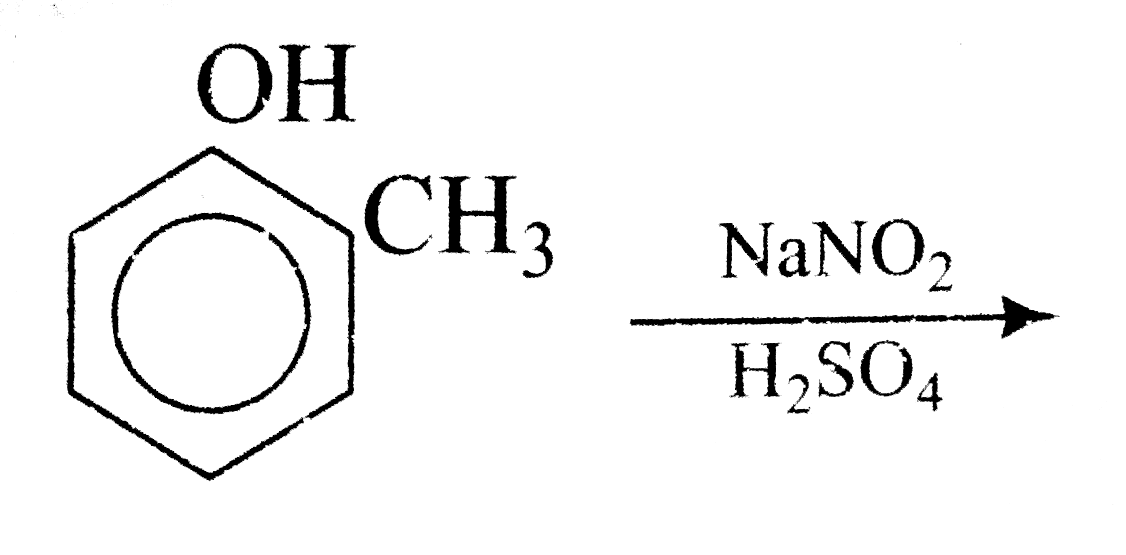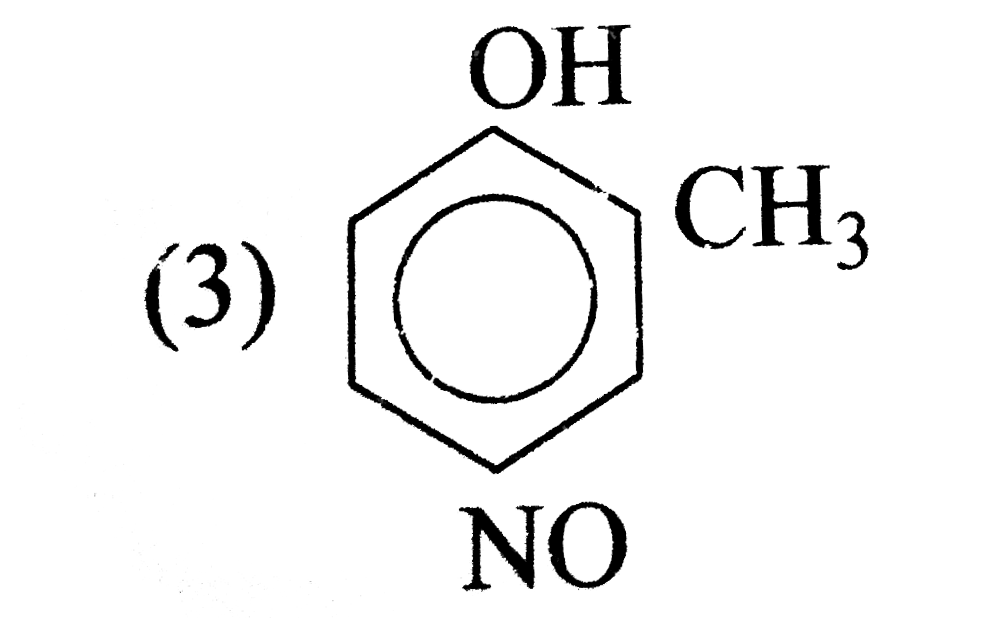The main organic product of the reaction of neopentyl bromide with aqueous NaOH is
Neopentyl alcohol
Isobutyl alcohol
3-Methylbutan-2-ol
2-Methylbutan-2-ol
The correct Answer is:D
To determine the main organic product of the reaction of neopentyl bromide with aqueous NaOH, we will follow these steps:
Step 1: Identify the Structure of Neopentyl Bromide
Neopentyl bromide has the following structure:
- It consists of a central carbon atom bonded to four groups: three methyl groups (CH₃) and one bromine atom (Br).
- The structure can be represented as:
CH3|CH3−C−CH2−Br|CH3
Step 2: Mechanism of Reaction
The reaction of neopentyl bromide with aqueous NaOH will proceed via an SN1 mechanism:
- In an SN1 reaction, the first step is the formation of a carbocation after the leaving group (Br) departs.
- The bromine atom leaves, resulting in the formation of a carbocation:
CH3
|
CH3 - C⁺ - CH2
|
CH3
Step 3: Stability of Carbocation
- The carbocation formed is a primary (1°) carbocation, which is not very stable.
- To increase stability, a rearrangement can occur. In this case, a 1,2-methyl shift can take place where one of the methyl groups shifts to the adjacent carbon, leading to a more stable tertiary (3°) carbocation:
CH3|CH3−C−CH2|CH3
After the shift, the structure becomes:
CH3∣∣CH3−C⁺−CH3∣∣CH2
Step 4: Nucleophilic Attack
- The hydroxide ion (OH⁻) from NaOH acts as a nucleophile and attacks the positively charged carbon of the tertiary carbocation:
CH3|CH3−C−OH|CH2
Step 5: Final Product
- The final product of this reaction is 2-methylbutan-2-ol. The IUPAC naming involves:
- Counting the longest carbon chain (4 carbons) and identifying the position of the hydroxyl group (OH) and the methyl group (CH₃).
- The correct name is 2-methylbutan-2-ol.
Conclusion
The main organic product of the reaction of neopentyl bromide with aqueous NaOH is 2-methylbutan-2-ol.
---
Neopentyl bromide has the following structure:
- It consists of a central carbon atom bonded to four groups: three methyl groups (CH₃) and one bromine atom (Br).
- The structure can be represented as:
CH3|CH3−C−CH2−Br|CH3
The reaction of neopentyl bromide with aqueous NaOH will proceed via an SN1 mechanism:
- In an SN1 reaction, the first step is the formation of a carbocation after the leaving group (Br) departs.
- The bromine atom leaves, resulting in the formation of a carbocation:
CH3
|
CH3 - C⁺ - CH2
|
CH3
- The carbocation formed is a primary (1°) carbocation, which is not very stable.
- To increase stability, a rearrangement can occur. In this case, a 1,2-methyl shift can take place where one of the methyl groups shifts to the adjacent carbon, leading to a more stable tertiary (3°) carbocation:
CH3|CH3−C−CH2|CH3
After the shift, the structure becomes:
CH3∣∣CH3−C⁺−CH3∣∣CH2
- The hydroxide ion (OH⁻) from NaOH acts as a nucleophile and attacks the positively charged carbon of the tertiary carbocation:
CH3|CH3−C−OH|CH2
- The final product of this reaction is 2-methylbutan-2-ol. The IUPAC naming involves:
- Counting the longest carbon chain (4 carbons) and identifying the position of the hydroxyl group (OH) and the methyl group (CH₃).
- The correct name is 2-methylbutan-2-ol.
The main organic product of the reaction of neopentyl bromide with aqueous NaOH is 2-methylbutan-2-ol.
Topper's Solved these Questions
- ORGANIC COMPOUNDS WITH FUNCTIONAL GROUP CONTAINING HALOGENS BOOK - DINESH PUBLICATIONCHAPTER - ORGANIC COMPOUNDS WITH FUNCTIONAL GROUP CONTAINING HALOGENS EXERCISE - BRAIN TEASERS - 9
40 Videos
- ORGANIC COMPOUNDS WITH FUNCTIONAL GROUP CONTAINING HALOGENS BOOK - DINESH PUBLICATIONCHAPTER - ORGANIC COMPOUNDS WITH FUNCTIONAL GROUP CONTAINING HALOGENS EXERCISE - BRAIN TEASERS - 10
40 Videos
- ORGANIC COMPOUNDS WITH FUNCTIONAL GROUP CONTAINING HALOGENS BOOK - DINESH PUBLICATIONCHAPTER - ORGANIC COMPOUNDS WITH FUNCTIONAL GROUP CONTAINING HALOGENS EXERCISE - REASON ASSERTION TYPE MCQs
22 Videos
- NO IDEABOOK - DINESH PUBLICATIONCHAPTER - NO IDEAEXERCISE - Unit Test -
1 Videos
- POLYMERSBOOK - DINESH PUBLICATIONCHAPTER - POLYMERSEXERCISE - Matrix
5 Videos
Similar Questions
Knowledge Check

The principle organic product of the reaction isA B
B C
C D
D
The main product of the given reaction is
 Aphenyl cyanideBnitrophenolCanilineDhydroxylamine .
Aphenyl cyanideBnitrophenolCanilineDhydroxylamine .The major product of the reaction of ethyl bromide with silver nitrite is:
ANitroethaneBNitroethane and ethyl nitriteCEthyl nitriteDEthane
 principal organic product of the reaction will be :
principal organic product of the reaction will be :
View SolutionThe product of the reaction of ethyl bromide with dry silver oxide in ethanol is the functional isomer of:
View SolutionThe main product of following reaction will be:

View SolutionReaction of tert-butyl bromide with aqueous sodium hydroxide follow
View SolutionReaction of t-butyl bromide with alcoholic KOH products
View Solution


